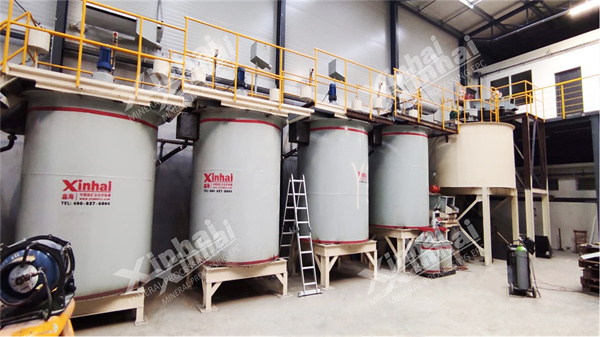The Carbon in Leach (CIL) process is a popular method for gold recovery from ores. It involves the adsorption of gold onto activated carbon, followed by elution, regeneration, and final recovery of gold from the carbon. This process has been widely used in the gold mining industry due to its efficiency and cost-effectiveness. In this article, we will discuss the CIL process in detail, including its working principle, advantages, and limitations.

The CIL process involves the use of activated carbon to adsorb gold from the ore. The ore is first crushed and then ground to a fine powder. The ground ore is then mixed with a cyanide solution and lime, which dissolves the gold and forms a gold-cyanide complex. The gold-cyanide complex is then adsorbed onto activated carbon, which is typically in the form of small pellets or granules.
The loaded carbon is then transferred to a series of tanks where the gold is eluted from the carbon using a hot caustic solution. The gold is then recovered from the eluate by precipitation or electrowinning. The carbon is then regenerated using a solution of hydrochloric acid and sodium hydroxide. The regenerated carbon is then reused in the CIL process.
The CIL process has several advantages over other gold recovery processes. Firstly, it is a relatively simple process, which is easy to operate and maintain. Secondly, it is very efficient, with high gold recovery rates of up to 95%. Thirdly, it is cost-effective, with low capital and operating costs. Finally, the process can be used to recover gold from a wide range of ore types and grades.
Despite its many advantages, the CIL process also has some limitations. Firstly, it requires the use of cyanide, which is a toxic substance and must be handled with care. Secondly, it can be affected by the presence of impurities in the ore, which can reduce the efficiency of the process. Finally, the process is not suitable for the recovery of gold from low-grade ores, as the cost of processing such ores may be higher than the value of the recovered gold.
The Carbon in Leach (CIL) process is an efficient and cost-effective method for the recovery of gold from ores. It has several advantages over other gold recovery processes, including high gold recovery rates and low capital and operating costs. However, the use of cyanide and the limitations of the process must be considered when selecting a gold recovery process. Overall, the CIL process remains a popular and effective method for gold recovery in the mining industry.